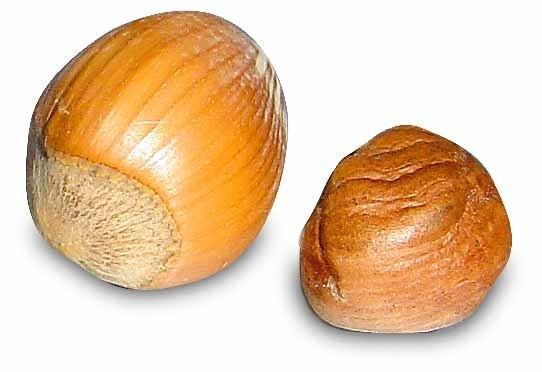ICD-9-CM 995.64, V15.05 | MeSH D021184 | |
 | ||
A tree nut allergy is a hypersensitivity to dietary substances from tree nuts and edible tree seeds causing an overreaction of the immune system which may lead to severe physical symptoms. Tree nuts include, but are not limited to, almonds, Brazil nuts, cashews, chestnuts, filberts/hazelnuts, macadamia nuts, pecans, pistachios, pine nuts, shea nuts and walnuts.
Contents
Tree nut allergies are distinct from peanut allergy, as peanuts are legumes, whereas a tree nut is a hard-shelled fruit.
Description
People with tree nut allergy are seldom allergic to just one type of nut, and are therefore usually advised to avoid all tree nuts, even though an individual may not be allergic to the nuts of all species of trees.
Someone allergic to walnuts or pecans may not have an allergy to cashews or pistachios, because the two groups are only distantly related and do not necessarily share related allergenic proteins. The severity of the allergy varies from person to person, and exposure can increase sensitization. For those with a milder form of the allergy, a reaction which makes the throat feel like cotton may occur . The raw nut protein usually causes a more severe reaction than the oil, and extra roasting or processing can reduce the allergic reaction. Those diagnosed with anaphylaxis will have a more immediate mast cell reaction and be required to avoid all exposure to any allergen-containing products or byproducts, regardless of processing, as they are prone to even greater sensitivity. An allergy test or food challenge may be performed at an allergy clinic to determine the exact allergens. New immunotherapy treatments are being developed for tree nut allergy.
This allergy tends to be lifelong; recent studies have shown that only about 9% of children outgrow their tree nut allergy.
Hazelnut has been used as a model tree nut in the study of tree nut allergies.
Prevention and treatment
In the United States, the federal Food Allergen Labeling and Consumer Protection Act (FALCPA) requires that any packaged food product that contains tree nuts as an ingredient must list the specific tree nut on the label. Foods that almost always contain tree nuts include pesto, marzipan, Nutella, baklava, pralines, nougat, gianduja, and turrón. Other common foods that may contain tree nuts include cereals, crackers, cookies, baked goods, candy, chocolates, energy/granola bars, flavored coffee, frozen desserts, marinades, barbecue sauces, and some cold cuts, such as mortadella. Tree nut oils (especially shea nut) are also sometimes used in lotions and soaps. Asian and African restaurants, ice cream parlors, and bakeries are considered high-risk for people with tree nut allergy due to the common use of nuts and the possibility of cross contamination.
There has been a single documented case of pink peppercorns (often used in four-blend peppers) causing an allergic reaction in those with nut allergies. Pink peppercorn is not a true pepper, but dried roasted berries derived from Schinus terebinthifolius, a flowering plant in the family Anacardiaceae, native to South America. Common names include Brazilian Pepper, Rose Pepper and Christmasberry. Pink peppercorns are used as a spice to add a mild pepper-like taste to foods. It may potentially cause an irritating skin effect and has been associated with atopic dermatitis in canines. Interestingly, S. terebinthifolius is a member of the family Anacardiaceae, which include plants in the genera Anacardium (cashew) and Pistacia (pistachio). No allergens from this plant have been characterized but there is potential for cross-reactivity among different members of the Anacardiaceae family.
Treatment usually involves an exclusion diet and vigilant avoidance of foods that may be contaminated with tree nuts, nut particles, or oils. The most severe nut allergy reaction is anaphylaxis, an emergency requiring immediate attention and treatment with epinephrine.
Tree nut alternatives
Since many people with tree nut allergies also have peanut allergies, and peanut butter is a popular derivative of peanuts and widely used product, especially in the United States, many schools offer peanut-free menu options or implement entirely nut-free policies. For instance, sunflower seed butter can provide an alternative in schools where peanut butter and peanuts have been banned. However, a small number of people with tree nut and/or peanut allergies may also be allergic to sunflower seed butter. According to one study a person with a known peanut allergy suffered an acute reaction to a "nut-free" butter containing sunflower seeds.
From a nutritional perspective, sunflower butter contains almost four times as much vitamin E as peanut butter, and about twice as much iron, magnesium, phosphorus and zinc. Peanut butter contains higher levels of protein and slightly less sugar and fat.
Sunflower butter, or sunflower seed butter, is a food paste made from the oil of sunflower seeds.
